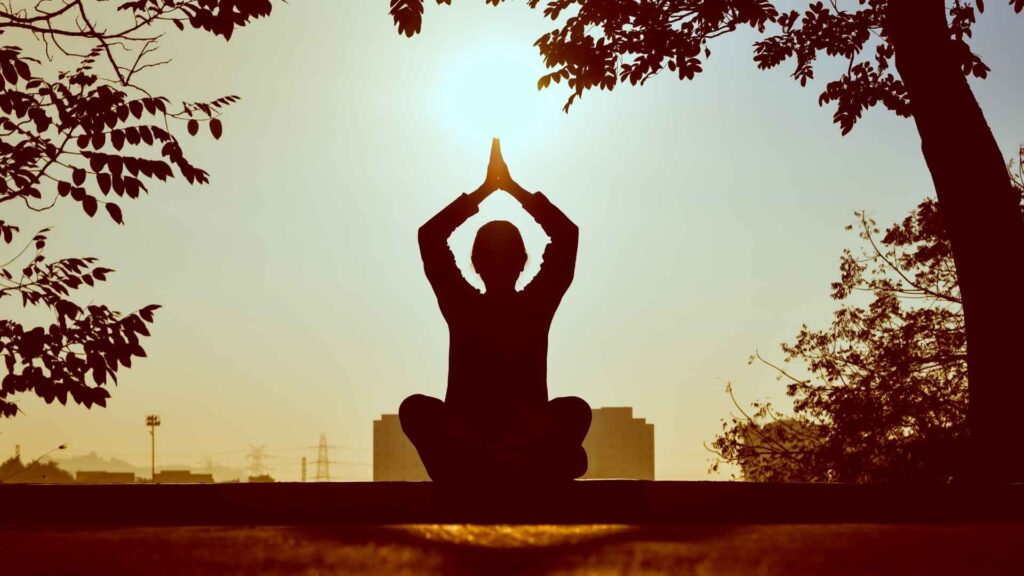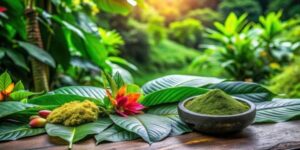With trends in wellness all changing over time, certain combinations cannot be forgotten due to their cool-factor combination and their ability to integrate healthy mind-body capabilities.
A three-thousand-year-old movement practice and Southeast Asian botanical remedy that have distinct differences and common threads in the way they are used, kratom and yoga are forms that are becoming increasingly intertwined in the search for a holistic journey of well-being.
However, why is there a connection between yoga and kratom? Is there any actual effect of the kratom and yoga combination, and what should practitioners be aware of to use it safely?
In this blog, we’ll take a closer look at the science, custom, and best practice of this new wellness duo.
The Roots: Yoga and Kratom in Tradition
1. Yoga: The Ancient Path to Mind-Body Harmony
Dating back thousands of years, yoga, which originated in India, is not just an exercise. It is an intimate practice, as it involves a comprehensive system that encompasses movement (asanas), breathing (pranayama), and meditation (dhyana) to develop both physical flexibility and strength, as well as mental clarity and inner peace.
The positive effects of yoga in stress reduction, anxiety, depression, physical well-being, and overall well-being are confirmed in modern science.
2. Kratom: Southeast Asia’s Botanical Ally
Kratom (Mitragyna speciosa) is a tropical tree that grows in Southeast Asia. Over the centuries, the laborers have chewed or brewed their leaves to make tea in order to increase energy, alleviate pain, and experience sleepiness.
In the West, you can find kratom in the form of powder, capsules, or extract, and it is consumed due to the particular quality that it offers in providing both stimulating and relaxing effects, depending on the strain and the dose of the drug.
The Link Between Kratom and Yoga
Why Combine Kratom and Yoga?
Both kratom and yoga are celebrated for their ability to promote relaxation, mindfulness, and physical comfort. Their effects are complementary:
- Yoga enhances flexibility, strength, and mental clarity while reducing stress and anxiety.
- Kratom can provide energy, focus, relaxation, or pain relief, depending on the strain and dosage.
Pairing the two can create a holistic wellness experience, amplifying the benefits of each practice.
How Kratom Can Enhance Your Yoga Practice
1. Enhanced Relaxation and Stress Relief
The relaxing effects of yoga are no secret, yet to individuals with anxiety issues, tension or restlessness, kratom can enhance the relaxation. Red vein kratom is specifically known to be soothing, and it is more comfortable to forget about stress and put yourself in a meditative state.
2. Improved Focus and Mindfulness
Yoga is as much presence of mind as it is a bodily exercise. Some kratom strains, particularly the white and green strains, are hailed for helping people increase the concentration and clarity of their minds. This can assist practitioners to be present, attentive, and aware during the yoga practice.
3. Pain Relief and Physical Comfort
Pain, stiffness, or aches may restrict oneself in a full involvement in yoga. Analgesic qualities of Kratom can reduce these obstacles, causing better stretches, enhanced mobility, and an enhanced yoga experience. This is more so to the victims of old injuries or those with chronic conditions.
4. Energy and Motivation
With an active version of yoga (such as Vinyasa or Power Yoga practices), a gentle and stimulating kratom would deliver positive energy and motivational level to endure and sustain during a practice.
The Science Behind Kratom and Yoga
Kratom’s Effects: Strain and Dosage Matter
- White vein kratom: Energizing, focus-enhancing—ideal for morning or active yoga.
- Green vein kratom: Balanced, offering both mild energy and relaxation—suitable for midday yoga or meditation.
- Red vein kratom: Calming, sedative, and pain-relieving—best for restorative or evening yoga sessions.
Kratom’s main alkaloids, mitragynine and 7-hydroxymitragynine, interact with opioid receptors and other neurotransmitter systems, producing a spectrum of effects from stimulation to sedation.
Yoga’s Effects: Mind-Body Integration
Yoga’s benefits are well-supported by research, showing improvements in:
- Stress and anxiety reduction
- Flexibility, strength, and posture
- Cardiovascular health
- Mental clarity and mindfulness
- Sleep quality and recovery
Combining Kratom and Yoga: Best Practices
1. Choose the Right Strain and Dose
- For relaxation: Red vein kratom at a moderate dose.
- For energy and focus: White or green vein kratom at a low dose.
- For balance: Green vein kratom offers a middle ground.
Whenever using kratom or whenever using it in combination with yoga, begin with a low dose. Consequences may be different depending on weight, metabolism, and sensitivity.
2. Timing Your Intake
You should then take kratom 30-60 minutes before your yoga session so that the results have time to take effect. The timing will assist you in synchronizing the strongest effects of kratom with your practice.
3. Stay Hydrated
Yoga is slightly dehydrating, and so is kratom. Take lots of water before your session, during, and after the session to maintain your well-being and minimize the chances of side effects such as headache or dizziness.
4. Listen to Your Body
Be attentive to how your body and mind react. Adjust strain, dose, or schedule in case you are overly sedated, stimulated, or uncomfortable. When you are using a new strain of kratom, it is best to avoid the challenging poses.
5. Use High-Quality Kratom
When it comes to kratom, make sure you buy it only from reliable vendors that offer third-party lab testing. The presence of universal or adulterated products will reduce the benefits and risks.
6. Consult a Healthcare Professional
When considering the combination of yoga and kratom, do not forget to inform a healthcare provider about the state of your health and prescription drugs you may take to benefit your health. This is particularly threatening among those having problems with the heart, liver, or mental status.
Potential Risks and Considerations
While many users report positive experiences, combining kratom and yoga is not without potential downsides:
- Side Effects: With prolonged use, Kratom may result in nausea, dizziness, constipation, or addiction.
- Over-Sedation or Over-Stimulation: The incorrect strain or dose can render yoga practice hard or less cheering.
- Tolerance and Dependency: Regular kratom use can lead to tolerance and withdrawal symptoms. Use kratom occasionally rather than with every yoga session to minimize risks.
Sample Kratom-Infused Yoga Routines
Morning Energizer
- Yoga: Sun Salutations, Warrior Poses, Standing Balances
- Kratom: Low dose of white vein kratom for energy and mental clarity
- Breathwork: Ujjayi (Victorious Breath)
Midday Reset
- Yoga: Seated Twists, Forward Folds, Hip Openers
- Kratom: Green vein kratom for balanced energy and calm
- Breathwork: Nadi Shodhana (Alternate Nostril Breathing)
Evening Wind-Down
- Yoga: Restorative poses, Child’s Pose, Legs-Up-The-Wall
- Kratom: Moderate dose of red vein kratom for relaxation and pain relief
- Breathwork: Deep Belly Breathing
Final Thoughts
Both kratom and yoga are wonderful ways of achieving holistic health, and one may consider using a kratom and yoga combination to get there. When tackled in a thoughtful way, this combination can take relaxation a notch higher, boost concentration, as well as make yoga practices more attainable, particularly for pain and stress managers.
Still, the main trick is to consume kratom responsibly and select the appropriate strain to use and the suitable dose, and to listen to your body. Like any health and wellness practice, moderation and quality are required.
More Readings:







